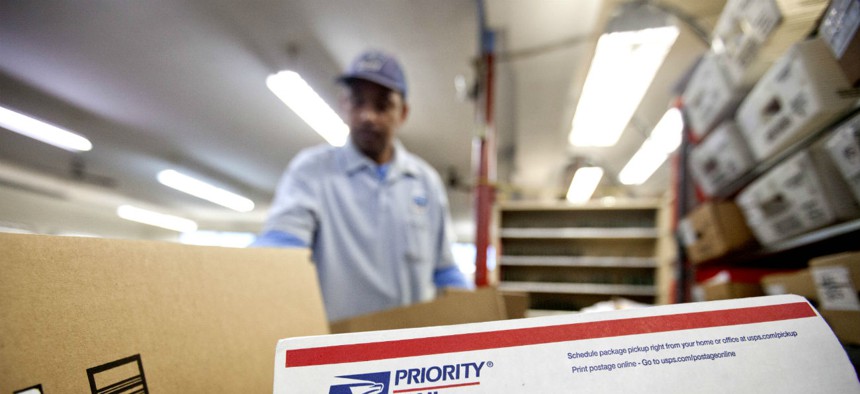After Dramatic Workforce Reductions, Postal Service Sees Spike in Overtime Hours
Faulty scheduling and fewer employees led to overtime uptick, IG says, in spite of mail volume decline.
The U.S. Postal Service’s spending on overtime pay to process mail spiked in fiscal 2018 following significant workforce cuts over the year, according to a new report.
The $257 million increase on overtime, a 31% jump, occurred despite the ongoing decline in mail volume and an emphasis by the mailing agency to cut personnel costs, the USPS inspector general said. The Postal Service slashed 10,000 jobs last year, 5,000 of which came from mail processing, while mail volume dropped by 5 billion pieces over the year.
Postal management had planned for a 1.3 million hour reduction in overtime, but exceeded its own estimate by 44%. Employees receive one-and-a-half times their hourly rate of pay for overtime, except in certain circumstances—known as “penalty overtime”—when they receive double their normal earnings. Penalty overtime hours exceeded the Postal Service’s plan by 126%.
The IG said much of the blame can be traced to a faulty scheduling system. USPS used a week from July 2017 to determine mail processing operations, and the required employee schedules to support them, for all facilities in fiscal 2018. That week, however, was not representative of a typical week and “it did not always schedule the right people, in the right place, at the right time,” the IG said.
Additionally, shedding 5,000 mail processing jobs required USPS to rebid many of those positions and schedules. The complexity of that rebidding process, coupled with the smaller workforce, led to the need for additional overtime despite the reduction in mail volume.
Dave Partenheimer, a USPS spokesman, said earlier this year the workforce cuts last year were necessary to fit with the agency’s new reality.
“Simply put, our workforce decreased to align with changes in mail volume,” Partenheimer said. He declined to predict whether there would be further cuts this year.
The auditors found 13% of all overtime in fiscal 2018 was unauthorized, meaning an employee worked more than eight hours in a day or 40 hours in a week without receiving prior approval from a supervisor. Unauthorized overtime accounted for just 7% of total overtime in fiscal 2017. The IG suggested some employees were gaming the system by taking sick leave and then working overtime on a scheduled day off in the same week. The office called on postal management to institute better controls over unauthorized overtime and employee availability. USPS said local leaders already have the authority and responsibility to monitor those issues, but set a goal of September 2019 to rectify the issue.
Postal management also agreed to fix its scheduling system and use a more representative week to set scheduling at each processing facility. It rejected, however, a recommendation that it build performance incentives based on effectively managing overtime into the compensation for supervisors. Such factors are already built into managers’ overall assessments, USPS said.




